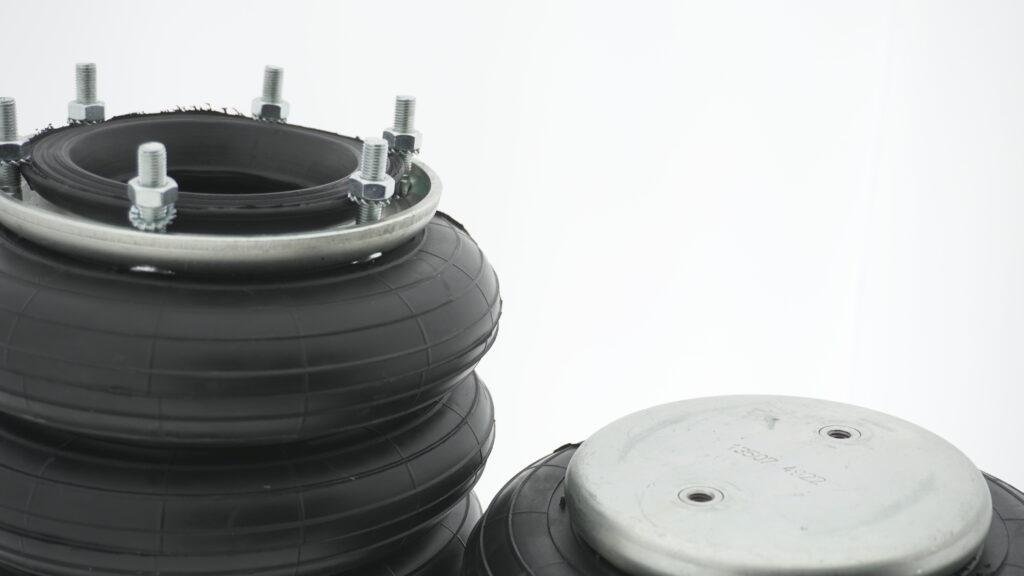
Eco-friendly air bellows: are biodegradable materials possible is an increasingly relevant question as industries seek sustainable solutions. Eco-friendly air bellows: are biodegradable materials possible addresses the potential shift from synthetic rubbers toward greener alternatives. Currently, most air bellows are made using natural rubber, NBR, or EPDM, which offer outstanding durability but are not biodegradable. However, ongoing research in biopolymer technologies aims to develop compounds that decompose naturally without releasing harmful residues. Additionally, hybrid materials combining bio-sourced rubber with reinforced fabric layers are being tested for industrial-grade air spring applications. Nevertheless, challenges remain, notably the need to balance biodegradability with mechanical strength and pressure resistance. Even more, the introduction of biodegradable air bellows must consider lifecycle emissions, including production, operation, and disposal phases. Consequently, future eco-friendly air bellows could dramatically reduce environmental impacts across industries. With continued innovation, fully biodegradable industrial air bellows may soon become a reality, supporting global sustainability goals.
Material science innovations supporting biodegradable air bellows
Material science innovations are key to answering: eco-friendly air bellows: are biodegradable materials possible. Researchers are developing new elastomers derived from plant-based oils and starch derivatives that mimic the properties of synthetic rubbers. For example, polylactic acid (PLA) composites and bio-based polyisoprene show promise for manufacturing flexible, durable air bellows. Additionally, improvements in natural fiber reinforcements, such as hemp and flax, enhance mechanical properties while ensuring biodegradability. Furthermore, blending recycled rubber with biodegradable additives could create transitional materials for eco-friendly air bellows. However, achieving the necessary resilience for industrial air pressure applications remains a critical hurdle. Nevertheless, developments in nano-reinforcement technologies are steadily closing this gap. Consequently, biodegradable material options for air bellows are expanding rapidly. Once proven viable, industries could switch to these eco-friendly solutions without sacrificing performance. Thus, material science is paving the way toward a greener future for air spring systems.
Lifecycle analysis of biodegradable versus conventional air bellows
A lifecycle analysis offers deeper insights into eco-friendly air bellows: are biodegradable materials possible for real-world application. Traditional air bellows provide long service lives and low maintenance, which positively impacts their overall environmental profile. In contrast, biodegradable air bellows may have shorter lifespans, requiring a careful evaluation of production and disposal emissions. Additionally, sourcing renewable raw materials for eco-friendly air bellows can lower carbon footprints during manufacturing. However, energy consumption in the processing of biopolymers must not offset the benefits of biodegradability. Moreover, the degradation process must avoid releasing microplastics or other pollutants into the environment. Equally important, transportation and packaging for biodegradable air bellows should align with sustainable practices. Therefore, a holistic lifecycle approach ensures that the transition to biodegradable materials truly benefits the environment. In essence, lifecycle analysis is essential in validating whether biodegradable air bellows meet eco-friendly manufacturing standards globally.
Challenges and opportunities for biodegradable air bellows
There are both challenges and opportunities in answering eco-friendly air bellows: are biodegradable materials possible. Key challenges include ensuring the pressure resistance, chemical durability, and lifespan necessary for industrial applications. Additionally, certification standards for biodegradability and industrial safety must be established and validated globally. Nevertheless, opportunities abound, particularly as industries demand greener alternatives for vibration isolation and actuation. By integrating biodegradable air bellows, companies can differentiate their products and demonstrate environmental leadership. Furthermore, as regulatory pressures on waste management and emissions grow, eco-friendly air bellows will gain competitive advantages. Another opportunity lies in circular economy models, where used air bellows could become compostable or recyclable components. In the same way, industries could benefit from government incentives for adopting biodegradable technologies. Therefore, by investing in R&D today, manufacturers position themselves at the forefront of the future sustainable industrial equipment market.
